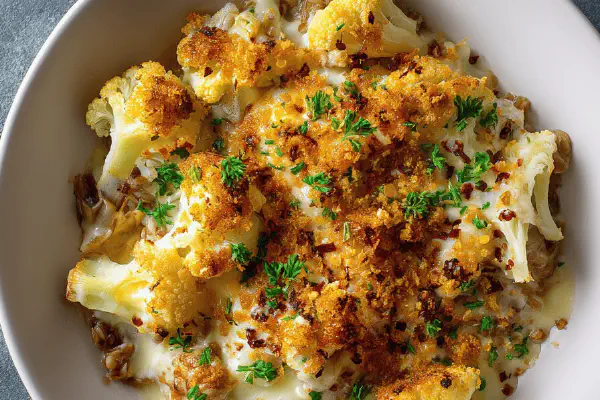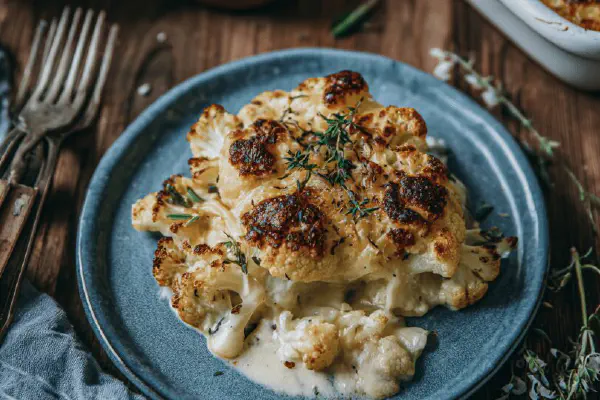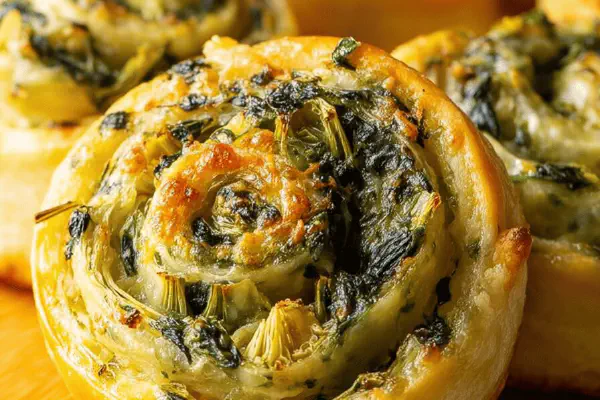Butternut Goat Cheese Tart

By Emma
Certified Culinary Professional
Ingredients
- 235 g commercial puff pastry, thawed slightly (half a lb)
- 80 ml sour cream (about 1/3 cup plus a tablespoon)
- 1 small French shallot, finely diced
- 1 small butternut squash, peeled
- 20 ml melted butter (1 tablespoon plus a splash)
- 130 g fresh goat cheese, broken or sliced into small rounds
- Salt and freshly ground black pepper
- Extra virgin olive oil for drizzling (optional twist)
- Fresh thyme leaves (optional addition for aromatic lift)
About the ingredients
Method
- Set oven rack low, around bottom third. Heat oven to 205 °C (400 °F). Line baking sheet with parchment.
- Lightly flour workspace. Roll pastry out into a roughly 25 cm (10 inch) square. Transfer carefully to sheet. Spread sour cream evenly over dough, leaving narrow border edge bare; stops sogginess. Scatter diced shallot atop sour cream. Watch the shallots; raw adds bite and fragrance, caramelizing a bit in oven adds depth.
- Take butternut squash, cut off top third at narrow end; slice this piece paper-thin on mandoline or sharp knife. Set aside. Halve bigger bottom, scoop seeds out with spoon and discard or roast separately. Slice other half thinly; thickness governs cooking time, aim thin but not translucent so it holds shape.
- Layer the bottom slices on dough overlapping slightly, recreate gentle scales or roof tiling effect. Then build layers with reserved thin slices to finish surface. No gaps; we want squash completely blanketing sour cream layer. Brush squash gently with melted butter; adds shine, promotes browning. Sprinkle with salt and fresh black pepper. Hint of thyme leaves layered in here really shines – optional but recommended.
- Pop into oven. Expect 28-32 minutes baking—the puff pastry should rise golden and flaky, edges crisp but not burnt. Squash must yield easily when prodded with a fork, no resistance but not mush. Watch smoke or excessive browning; ovens vary. If edges rise and color unevenly, shield with foil halfway through.
- When soft and golden, scatter goat cheese evenly over top; don’t pile or it won’t warm through cleanly. Return to oven for 4-6 minutes max. We’re after warmed cheese that’s slightly melting, not fully liquefied or bubbling gold. Too much heat kills the delicate freshness. That step wakes the goat’s cheese and melds flavors gently.
- Let rest a few minutes before slicing into generous squares. Resting solidifies pastry edges and cools cheese just enough so it doesn’t run. Serve warm or near room temp.
- Avoid soggy bottom by not overload sour cream or layering very watery squash slices—if your squash is extra moist, pat dry with paper. Preferably chill pastry before baking to avoid shrinkage.
- If you can’t find butternut squash, sweet potato or kabocha works but adjust times and sweetness.
Cooking tips
Chef's notes
- 💡 Butter brush on squash slices before baking prevents dryness and encourages browning. Key for that nutty roasted flavour. Don’t skip; oil changes flavor, butter’s tactile and aromatic lift needed. Thin layers cook evenly; too thick? Raw inside or mushy. Mandoline helps but steadiness counts. Watch edges color, foil shield halfway if getting dark early. Thickness governs timing here; thinner shortens, thicker drags cook needed.
- 💡 Sour cream spread must be thin and even; too much soaks pastry bottom, soggy disaster. Leave border bare; stops run-off soaking crust. You can swap crème fraîche or strained Greek yogurt but drain sieved overnight. That keeps moisture controlled; extra water kills pastry rise and crispness. Deployment of raw shallots adds bite upfront, caramelizes slightly in oven. Caramelizing fully needs longer time, shifts taste profile but raw is fresher punch.
- 💡 Add goat cheese last few minutes; cheese melts gently, softens without liquefying or browning. Too hot, cheese loses fresh tang and turns crumbly or oily. Added too early makes mush underneath. Goat cheese freshness affects melting; aged varieties tougher, fresher crumbly or soft works best. Scatter thin but even; pile means uneven heat, cold center bits. Allow cheese to rest on warm tart to heat through mild before slicing.
- 💡 Squash texture is a tactile guide—firm but fork-tender, not mush. Visual cues like edges curling, faint golden tips, slight translucency on slices but shape intact. Cooking times approximate; ovens vary big time. Mid-bake check at 25 mins. If smoke or dark spots appear, tent foil gently. Crisp edges signal pastry readiness but check base, use spatula test if unsure. Oven placement matters: lower third rack cooks bottom through gently while top crisps.
- 💡 Rest tart before slicing; pastry cools slightly, cheeses firms gently, edges solidify—makes cleaner cuts. Cutting hot means cheese drips, compacts layers unevenly. Leftovers reheat oven or toaster oven only; microwave loss of crunch. If pastry shrinks or cracks after baking, chill pastry before rolling. Handling temps influence puff; warm pastry tears, cold stays flaky. Slicing dry squash slices before layering stops extra moisture pooling.
Common questions
Can I substitute butternut squash?
Sweet potato or kabocha pumpkin swap well but adjust cook times. Denser roots need longer. Flavor changes slightly sweeter or earthier. Texture differences too; test fork tenderness midway. Slice evenly so cooking stays predictable.
How to avoid soggy pastry bottom?
Spread sour cream thin; thick paste wilts puff. Leave border bare; no runoff soaking crust. Dry squash slices well with paper towel before layering. Butter brush juices off squash sides, seals surface. Chill dough well; cold dough rises better. Bake on lower rack for crisp base.
When to add goat cheese exactly?
After initial bake of squash and pastry. Scatter cheese, back to oven 4-6 minutes max. Melt gentle should not bubble or brown. Longer heat kills freshness, risks greasy top. Cheese melts, softens bite, melds flavors without drowning them.
Best way to store leftovers?
Store wrapped in fridge, cool fully first. Reheat oven/toaster oven only; retains crisp. Microwave ruins crust. Leftover slices eat cold also fine, unwrap for freshness. Avoid stacking; cheese tends to smear when squeezed.



